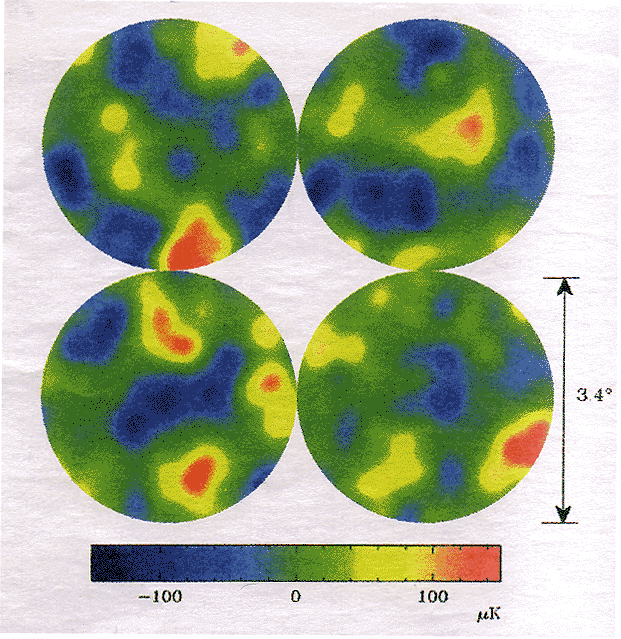1. a). Light and other forms of radiation are detected that originated from sources which are now very large distances (billions of light-years) away
(implication - the universe is very, very big)
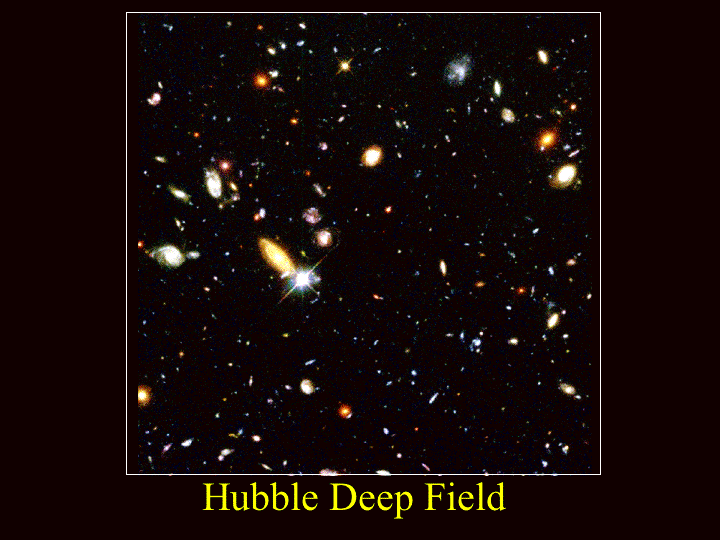
This photograph, called the Hubble Deep Field, shows only a tiny piece of the sky - a piece so small that you could cover it with a grain of sand held at arm's length. Nearly every small dot in this picture is a galaxy.
The distribution of galaxies in the universe is not uniform. Galaxies tend to be grouped into clusters and the clusters into superclusters. There is a project underway to map the large-scale structure of the universe.
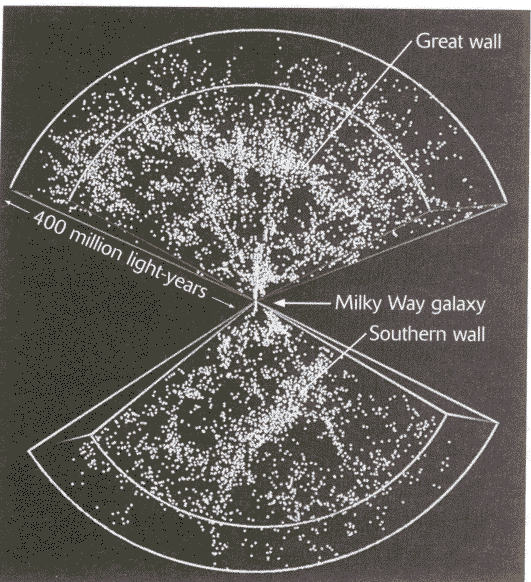
b). The sky is dark at night(implication - the universe is not infinite in extent and infinitely old)
c). The universe looks roughly the same whichever direction we look
2. Red shifts - the wavelengths of radiation from each galaxy are shifted toward the red side of the spectrum by a factor roughly proportional to the distance of the galaxy from us.
(implication - the galaxies are receding, or the universe is expanding)
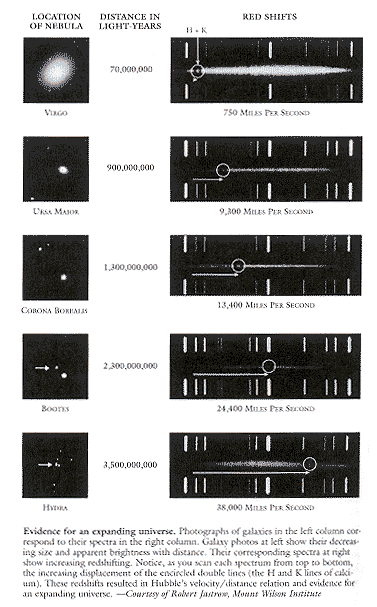
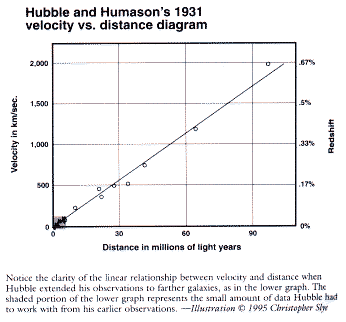
red shift of 1 = 100% increase in wavelength - or the wavelength has doubled
astonomers broke the redshift 2 barrier in the 1960s, redshift 3 in the 1970s reshift 4 in the 1980s and redshift 5 in 1997.
Reshifts can be converted to a "lookback time". A lookback time of 1 billion years means the light left the galaxy 1 billion years ago. We are seeing the galaxy as it was 1 billion years ago. A larger redshift means a larger lookback time.
The universe is very different as a function of lookback time. For example, at large lookback times galaxies can be observed in the processes of forming. Also, quasars are observed only at larger lookback times, when the universe was much younger.
3. Cosmic microwave background (CMB) radiation, nearly uniform in all directions. This radiation does not come from a single source, rather it comes from every point in the universe. Believed to represent radiation with a red-shift of 1,100. It is the earliest phenomenon that we will ever observe.
(implication - this is the remnant of a state of very high energy density)
"In fact, the Big Bang theory does much more than simply predict the existence of the cosmic microwave background. It also predicts it's precise spectrum. NASA's COBE satellite measured the spectrum shortly after its launch in1989, and the result was a perfect match between prediction and theory - a result that provoked a burst of applause from the audience when it was announced at a major scientific conference in January 1990. For Big Bang theorists, this was like winning the Super Bowl."J. Bennett, On the Cosmic Horizon, pg 122-123.
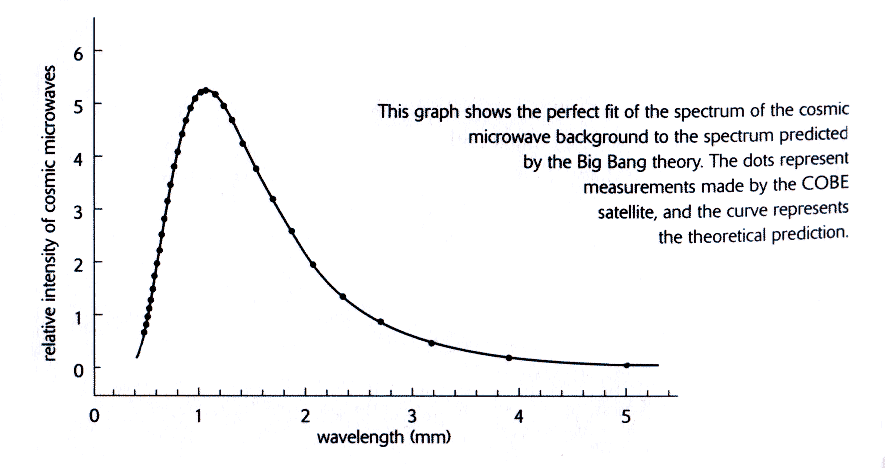
tiny fluctuations in the CMB were detected in 1992 in the COBE project - they are presumed to be the seeds of cosmic architecture
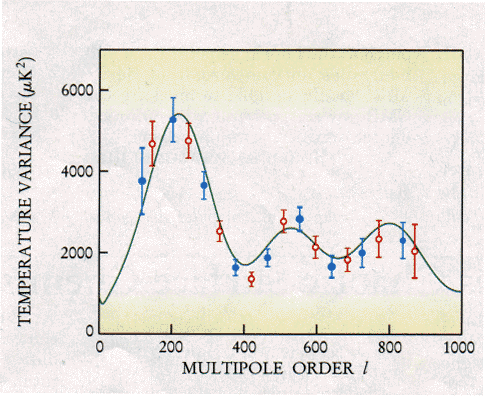
"Not only did we find what are the seeds of the modern day structure - and that is the galaxies and clusters of galaxies and clusters of clusters of galaxies - but we also found evidence of the birth of the universe, I believe, because I think that if you look at these fluctuations and ask, "How could they have gotten in there?" some of them are so large - that is, they stretch across billions of light-years back at a very early time - that means they hadn't changed - if you move matter and energy arround at the speed of light, you can only cross a teeny fraction of them. And so these are primordial - they're in from the moment of creation. And so it's really like looking back at creation and seeing the creation of space and time and the universe and everything in it, but also the imperfections of the creation, sort of the fingerprints from the Maker, if you understand what I mean, or the machining marks from the machine that tooled the universe, ..."George Smoot, Show Me God, pg 167-168.
"the most important discovery of the century, if not of all time."Steven Hawking, quoted by George Smoot and Keay Davidson, Wrinkles in Time, pg 30.
